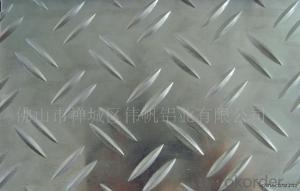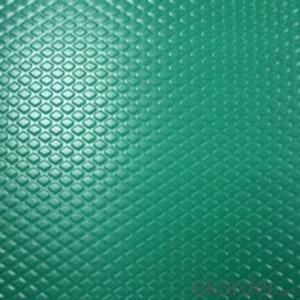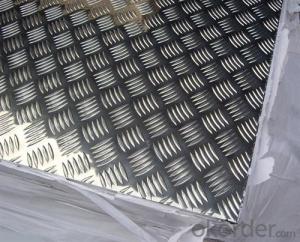Embossed Aluminum Tread Plate
Embossed Aluminum Tread Plate Related Searches
Led Light Bulbs For Ceiling Fixtures Led Lamps For Ceiling 42 In Ceiling Fan With Light Aluminum Coil Stock For Gutters Hole Saw For Aluminum Plate Aluminum Tread Plate For Trailer Bow Plate For Aluminum Boat Max Temp For Aluminum Foil Aluminum Foil For Key Fob Aluminum Foil For Hair FrizzHot Searches
1/4 Aluminum Plate For Sale Aluminum Diamond Plate For Sale 6061 Aluminum Plate For Sale Aluminum Dock Plate For Sale 7075 Aluminum Plate For Sale Aluminum Tread Plate For Sale Aluminum Checker Plate For Sale Aluminum Plate For Sale Near Me Plate Aluminum For Sale Aluminum Plate For Sale China Black Aluminum Plate China Aluminum Plate Panels China Aluminum Floor Plate China Aluminum Composite Plate China Flat Aluminum Plate China Cutting Aluminum Plate China Aluminum Plate Suppliers China Anodized Aluminum Plate Aluminum Plate China 1 4 Aluminum Diamond Plate PriceEmbossed Aluminum Tread Plate Supplier & Manufacturer from China
Okorder.com is a professional Embossed Aluminum Tread Plate supplier & manufacturer, offers integrated one-stop services including real-time quoting and online cargo tracking. We are funded by CNBM Group, a Fortune 500 enterprise and the largest Embossed Aluminum Tread Plate firm in China.Hot Products
FAQ
- Curtain wall aluminum plate reinforcement spacing between the number of appropriate, the country has no standard?
- As to the stiffener of the aluminum veneer, what are the following points?:1, aluminum reinforcement spacing is generally around 600mm, in order to ensure the aluminum plate in the positive and negative pressure conditions within the scope of deformation. When aluminum plate is welded, there is internal stress due to welding deformation (this internal stress can not be completely eliminated for a long time), and the rigidity of reinforcing bar should also be increased.2. The sectional dimension and spacing of stiffeners shall be determined according to the calculated wind pressure of the aluminum plate. But it is worth noting that the reinforcement calculation of single aluminum plate strengthening is different from the glass curtain wall, first, its strength is certainly no problem (still not seen the wind blowing broken plate, there is no joke) deflection possibility, bend off and windy weather also very few people to pay attention to the single aluminum plate plate surface after deformation the scenery. Therefore, the calculation of deflection of stiffeners are considered under the condition of wind strength and deflection when the winds of aluminum can cause permanent plastic deformation.In fact, aluminum veneer manufacturers generally use the single aluminum plate edge folding groove made of aluminum and 20*40*20, installed in the distance about 600mm. Also useful for profile (grooved aluminum) stiffenersThe spacing between stiffeners is very important to the cost of production. Generally speaking, the spacing of stiffeners will be changed from 600 to 350, and the cost will be increased by 8~15 yuan / square meter
- Yes, aluminum sheets are suitable for automotive wheels. Aluminum offers several advantages such as being lightweight, corrosion-resistant, and providing better heat dissipation. These qualities make aluminum sheets a popular choice for manufacturing automotive wheels as they contribute to improved fuel efficiency and overall performance of the vehicle.
- Due to their unique properties and versatility, aluminum sheets find various applications in the construction industry. Construction projects often utilize aluminum sheets for roofing, siding, cladding, windows, and doors. In roofing applications, aluminum sheets are ideal due to their lightweight yet durable nature. They can withstand harsh weather conditions, such as strong winds and heavy rainfall, without corroding or deteriorating. For siding applications, aluminum sheets are commonly chosen for their resistance to rust and corrosion. They not only provide protection but also enhance the overall appearance of buildings with an aesthetically pleasing finish. Furthermore, aluminum sheets can be easily shaped and bent to fit intricate or curved architectural designs. Cladding is another common use of aluminum sheets in construction. It serves to cover the exterior walls of buildings, providing insulation and protection against weather elements. By acting as a thermal barrier, aluminum cladding helps reduce energy consumption by keeping the interior cool in summer and warm in winter. It is also fire-resistant, making it a safe choice for construction projects. Moreover, aluminum sheets are frequently employed in the construction of windows and doors. Their lightweight nature makes them easy to handle and install, while their strength ensures durability and longevity. Additionally, aluminum sheets can be powder-coated or anodized, offering a wide range of color options to suit different architectural styles and preferences. In summary, aluminum sheets are commonly used in construction for roofing, siding, cladding, windows, and doors. Their lightweight, durable, and corrosion-resistant properties make them an excellent choice for various construction projects, providing both functional and aesthetic benefits to buildings.
- Yes, aluminum sheet can be painted. However, it is important to properly prepare the surface by cleaning, sanding, and priming it before applying any paint. This will ensure better adhesion and durability of the paint on the aluminum sheet.
- what is better for my 96 mustang gt. porting and polishing my stock heads or getting aluminum heads. also could i do a 3v conversion?
- It is hard to beat a set of CNC machined new heads. By the time you pay the machining amd parts cost you may be money ahead to buy the new heads.
- Aluminum sheets, indeed, prove to be a suitable choice for artistic sculptures. Boasting versatility, aluminum offers numerous benefits for sculpting endeavors. First and foremost, its lightweight nature makes it easier for artists to handle and manipulate. This quality grants them the ability to fashion intricate and detailed sculptures without compromising on structural integrity. Moreover, aluminum possesses high malleability, allowing it to be molded into diverse forms and contours. This grants artists the freedom to experiment with various designs and achieve their desired artistic expression. Additionally, aluminum's resistance to corrosion and weathering makes it an ideal material for outdoor sculptures. Its durability ensures that the artwork will withstand the elements and maintain its aesthetic appeal over time. Furthermore, aluminum sheets can be effortlessly welded or joined together, enabling artists to create larger and more intricate sculptures. All in all, aluminum sheets furnish artists with a flexible and long-lasting material that nurtures creativity and guarantees longevity in their sculptural masterpieces.
- Indeed, electrical transformers can certainly make use of aluminum sheets. Aluminum, being a highly conductive material, presents numerous benefits when employed in transformers. Primarily, its electrical resistance is lower in comparison to other materials such as copper, enabling efficient transmission of electrical energy. Consequently, this leads to reduced energy losses and enhanced overall performance. Furthermore, aluminum possesses the advantage of being lightweight, rendering it easier to handle and install. Moreover, it is also more economical than copper, thus making it the preferred option for extensive transformer applications. All in all, aluminum sheets offer a dependable and effective resolution for electrical transformers.














































